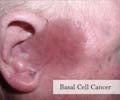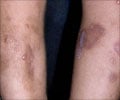Indoor tanning puts millions of Americans at risk of melanoma and keratinocyte skin cancers. Screening for skin cancer can help reduce the risk among indoor tanners.

TOP INSIGHT
Screening for skin cancer can help reduce the risk of developing skin cancer among indoor tanners.
About 5 million skin cancers are diagnosed each year in the United States.
The U.S. Food and Drug Administration recommends indoor tanners be screened regularly for skin cancer.
About 30,352 U.S. adults participated in the 2015 National Health Interview Study.
Indoor tanning as well as sociodemographic, health care, and skin cancer risk and sun protection factors (exposures); self-reported full-body skin cancer screening by a physician (primary outcome).
The authors were Carolyn J. Heckman, Ph.D., Rutgers Cancer Institute of New Jersey, New Brunswick, and coauthors
Source-Eurekalert
 MEDINDIA
MEDINDIA




 Email
Email










